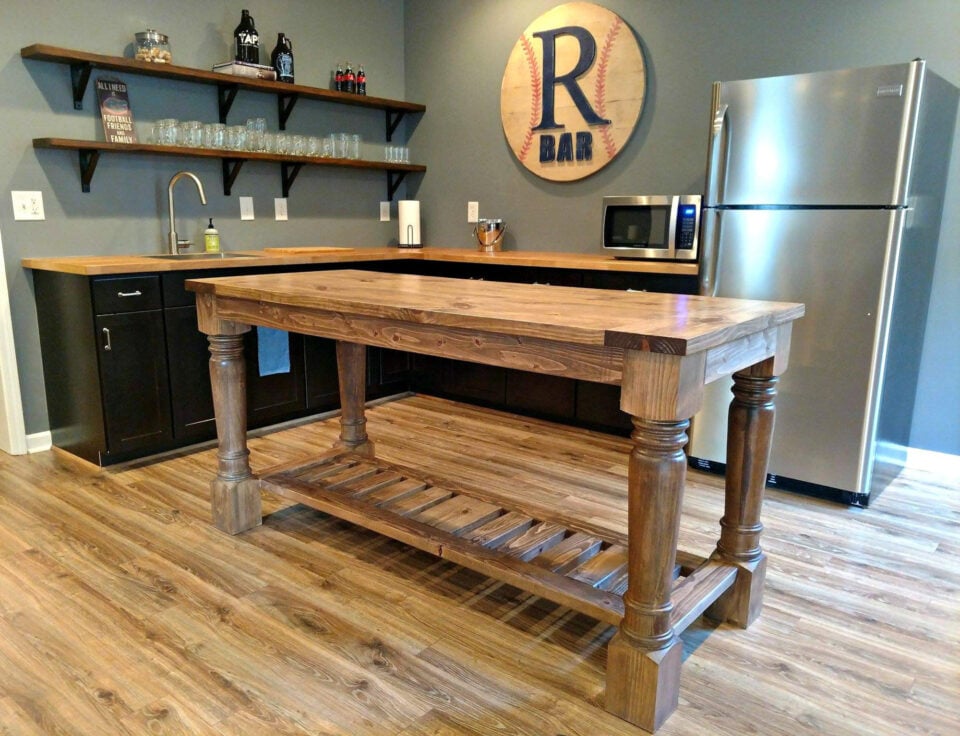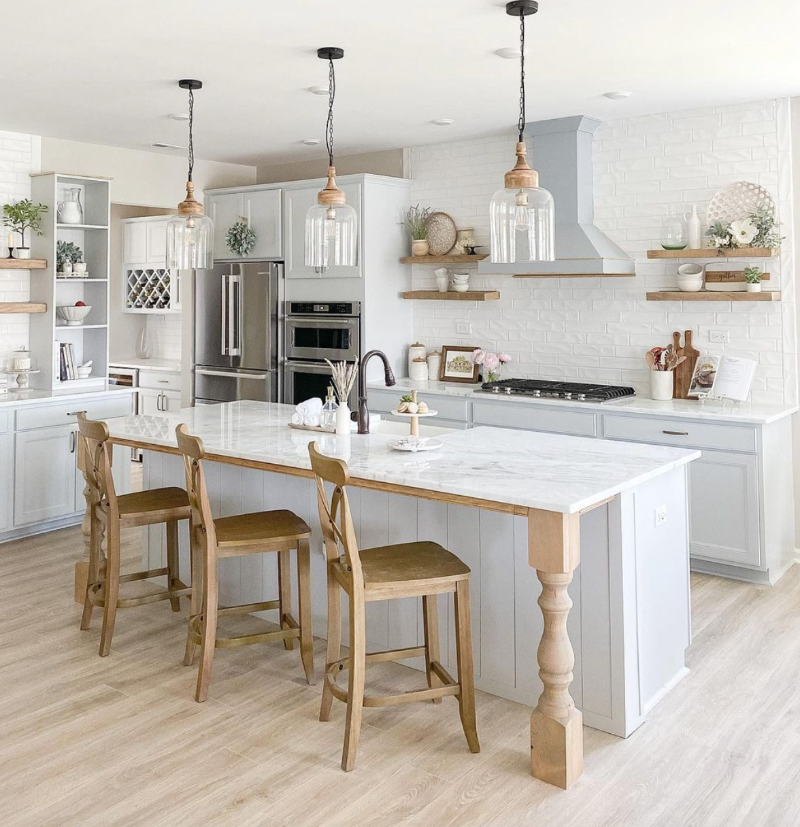A Comprehensive Guide to Choosing the Right Kitchen Island Leg
A Comprehensive Guide to Choosing the Right Kitchen Island Leg
Blog Article
Leading Considerations When Picking a Cooking Area Island Leg for Modern Cooking Area Interiors
In the realm of modern-day kitchen area insides, the option of a kitchen area island leg is pivotal, affecting both visual appeals and functionality. As these elements intertwine, they elevate further questions concerning just how to achieve the best equilibrium in between style and usefulness, leaving one to consider the ramifications of each decision on the general cooking area experience.
Product Options
When it involves choosing a cooking area island leg, material selections play a crucial duty in both aesthetic appeals and functionality. kitchen island leg. One of the most common materials consist of timber, metal, and composite choices, each offering distinct benefits and possible drawbacks
Wood is preferred for its heat and classic allure, offering an ageless look that enhances different kitchen area styles. It is extremely flexible, enabling personalization in terms of shades and surfaces. Nevertheless, timber might call for even more upkeep to avoid bending or damages from dampness.
Metal, on the other hand, brings a modern-day and commercial panache to cooking area islands. Stainless-steel and wrought iron are preferred choices, known for their toughness and resistance to use. They can hold up against the rigors of daily use yet may do not have the heat related to timber.
Composite materials, such as crafted wood or synthetic blends, supply a balance between rate, longevity, and appearances. These alternatives are frequently created to resemble the look of natural materials while supplying resistance to spills and scratches.
Ultimately, the choice of product ought to straighten with the general cooking area layout and intended usage, making sure that the cooking area island leg is both useful and visually appealing.
Design And Style
The design and style of a kitchen island leg substantially add to the overall visual of the space, enhancing the selected product. When selecting the leg design, take into consideration the building design of the kitchen area. Smooth, minimalist legs made of stainless steel or acrylic harmonize with contemporary layouts, while ornate, transformed wood legs improve typical or farmhouse appearances.
Furthermore, the surface of the leg can influence the aesthetic impact; a refined chrome or matte black finish might stimulate modern style, while distressed wood talks with rustic appeal. The leg's shape likewise plays a crucial role-- directly, angular types share an even more commercial feeling, whereas conical or bent legs introduce a softer, more inviting look.
Including attractive aspects, such as makings or embellishments, can add individuality and character to the kitchen island, further enhancing its duty as a prime focus. Eventually, the chosen leg style must not just align with the total cooking area design however also reflect the home owner's individual taste, making sure that the kitchen island comes to be a useful and unified centerpiece within the contemporary kitchen area inside.
Elevation and Percentages
Attaining the right elevation and proportions for a cooking area island leg is vital for both capability and aesthetics. Kitchen area islands commonly range in elevation from 28 to 36 inches, depending upon their planned use-- whether as a food preparation surface, eating area, or work area. Criterion kitchen counter height is about 36 inches, making it crucial that the legs you select click for info enhance this height to give a seamless, incorporated look.
Proportions additionally play a crucial function in the aesthetic balance of the cooking area. A slender leg may be ideal for a minimalistic or modern island, while a more learn the facts here now substantial leg may be required for rustic or conventional designs.
When picking the height and proportions of the kitchen island leg, remember the general design motif of your cooking area. This attention to detail not only boosts the capability of the area yet also adds to a natural and visually attractive interior style.
Stability and Support
Constantly guaranteeing stability and assistance in kitchen area island legs is essential for both safety and functionality. A well-constructed kitchen island need to endure everyday use, consisting of weight from appliances, food prep work, and social events. For that reason, the selection of legs ought to focus on durable products and layouts that can offer adequate support.
When assessing security, think about the leg's material-- steel, wood, or light weight aluminum often offer premium toughness compared to lighter choices. Furthermore, the design ought to include a wide base to distribute weight evenly and reduce the danger of tottering or tipping. Legs created with an A-frame or cross-bracing can dramatically improve stability.

Integrating these considerations will certainly not just improve the overall safety and security of the cooking area space however likewise enhance the longevity and capability of the kitchen area island, making it a valuable centerpiece in modern-day cooking area insides.
Completing Touches
When it comes to completing a kitchen area island, thoughtful finishing touches can significantly boost both its aesthetic allure and functionality. Selecting the appropriate leg style is crucial, but enhancing it with ideal details can transform the entire room. Think about including attractive elements such as toe kicks or baseboards that match the cabinets or flooring to develop a seamless look.

A natural color scheme and material selection will certainly elevate the cooking area island, making it an exciting focal factor. By paying focus to these completing touches, house owners can develop a cooking area island that is both stunning and useful, catering to their way of living and design preferences.
Conclusion

In the realm of contemporary cooking area insides, the option of a kitchen island leg is critical, affecting both visual appeals and performance.The style and layout of a kitchen area island leg considerably add to the total aesthetic of the room, enhancing the picked material.Attaining the right elevation and proportions for a kitchen island leg is essential for both capability and appearances.Regularly making certain security and assistance in cooking area island legs is vital for both safety and performance.In summary, picking a cooking area island leg for modern-day interiors requires careful consideration of product options, layout style, height, proportions, and stability.
Report this page